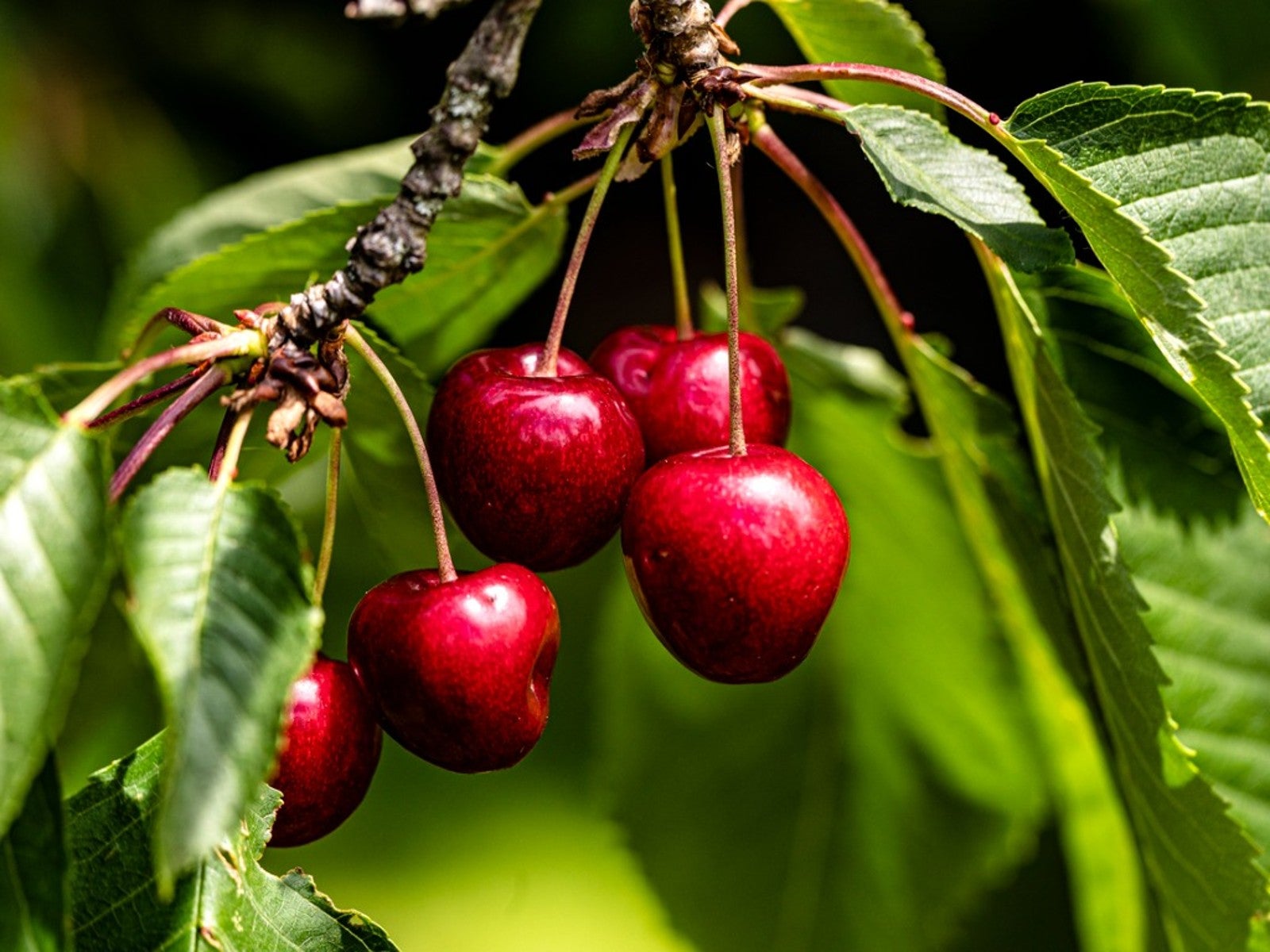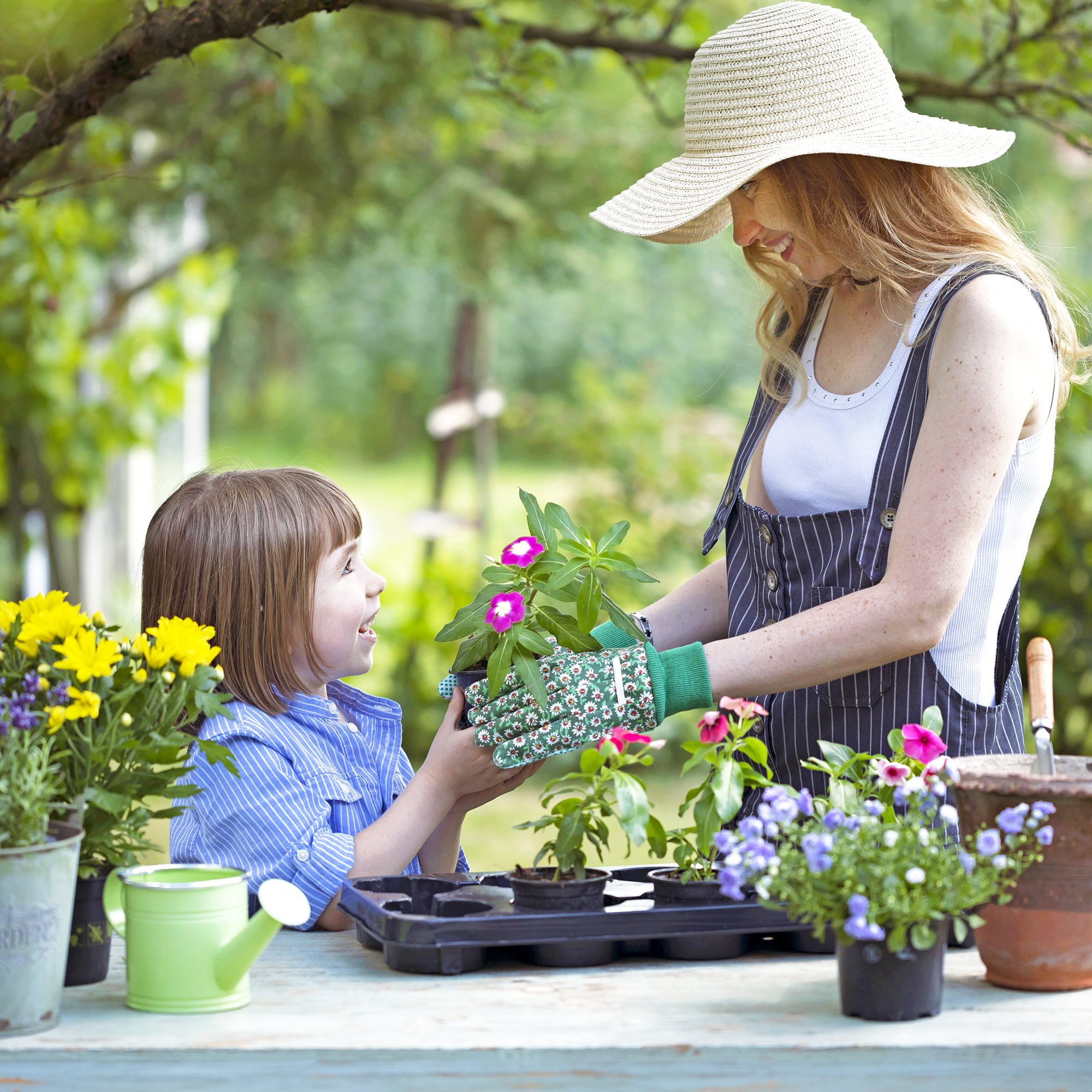Cherry Tree Care - How To Grow Cherry Trees

Teo Spengler
Cherry trees are prized for two reasons -- their delicious fruit and their stunning flowers. Which tree you want to plant will depend a lot on what you're looking for. But whether you want cherry blossoms or cherry pie, growing conditions are more or less the same.
Quick Facts about Cherry Trees
- Botanical name: Prunus avium (sweet) Prunus cerasus (sour)
- Height: depends on species and variety
- Spread: depends on species and variety
- Sun exposure: Full sun for best fruiting
- Soil requirements: deep, well-drained loam with low alkalinity and low salinity
- Hardiness zones: depends on species and variety
- When to plant: Early spring for bare root; spring or fall for potted
Cherry Tree Care
Cherry trees do best in soil that is well-drained and fertile with a pH of 6.0-7.0. They must have at least six hours a day of direct sun in order to produce fruit. If you have selected an appropriate tree for your hardiness zone and planted it in a well-draining, sunny site, cherry trees do not require much maintenance other than pruning.
How to Plant Cherry Trees
The best time to plant cherry tree seedlings is early spring when the ground has thawed but the trees are still dormant. They can also be planted in autumn.
Cherry trees do best in an area with warm summer days and cool nights. Select a spot with lots of sun, excellent air flow, and sufficient room for the tree to reach its mature size. If planting full size trees, space them some 40 feet (12 m) apart. For dwarf varieties, leave some 20 feet (6 m) between trees.
If you are planting a bare root cherry tree, be sure the planting hole is large enough to allow those roots to spread out. For potted trees, the hole should be three times wider than the pot. During planting, add compost to clay soil to improve drainage and allow air to enter. Keep your eye on the graft juncture of grafted stock so that it ends up a few inches above the final soil level.
Planting cherry seeds will not produce trees that are true to type and is not recommended if you want harvestable cherries.
Sun
Cherries need six to eight hours of sunlight per day, so you make sure not to plant them where they'll grow in the shade of other trees.
Gardening tips, videos, info and more delivered right to your inbox!
Sign up for the Gardening Know How newsletter today and receive a free copy of our e-book "How to Grow Delicious Tomatoes".
Watering
Cherry trees require irrigation for the first growing season to allow for the root system to develop. After that, they may not require extra water if they are getting at least 1 inch (2.5 cm) a week of rain. If not, water during the growing season. Irrigate in winter too if you soil doesn't freeze and the winter rain does not wet the entire root zone. When irrigating, water deeply and slowly.
Soil
Cherry trees require well-drained, fertile soil. Cherries are very susceptible to root rot, so the soil needs to drain well.
Fertilizer
Top dressing compost should be added to the soil if you are planting a bare root tree. If the tree grows at least 6 inches (15 cm) the first year, lightly fertilize it. Established trees that are fruiting should be fertilized after harvest with an organic fruit tree blend in the range of 16-16-16.
Pruning
Most fruit trees, including cherry trees, require pruning to shape the tree and open the canopy for light and air circulation. The optimal cherry pruning time is during the dormancy period in late winter. Trim back the tree’s canopy to open the center, allowing in sunlight and air. Each pruning cut should be made about 1/4 inch above an outward-facing bud. When the tree is mature, prune out the older sections of limbs to encourage growth.
Harvesting
Don’t expect a cherry harvest in the first year or two. A cherry tree can take up to five years before producing fruit. After fruiting starts, harvest the cherries when they are ripe. The timing will depend on the variety and the climate, but usually occurs in May through July. Note that cherries will not continue ripening once harvested, so don’t pick them until they are ripe. The longer the fruit is on the tree, the better the flavor.
Taste a cherry or two before picking. Sour cherries are soft and juicy when they are ripe. Sweet cherries are ready when their color is uniform and they have a sweet flavor in a meaty fruit.
Harvest your cherries with the stem attached. This helps retain their freshness after you pick them.
How many cherries to expect from your cherry tree? A dwarf cherry tree might yield up to five gallons (19 L), while a semi-dwarf tree up to 18 gallons (68 L).
Problems
If you think you like cherries, you've got nothing on local wild birds. They can pick a tree clean in one to two days. You can use scare devices or, better yet, net coverings, to protect the harvest.
If you don’t plant your tree in the correct soil, it could suffer from root and crown rot. These issues are caused by water-mold fungi when the soil is heavy, wet, or compacted.
Cherry Tree Varieties
Though there are countless cultivars to choose from, there are three main types of cherry tree:
Sweet Cherry Trees
Sweet cherry trees bear cherries with a sweet taste, perfect for eating fresh off the tree. These cherries bloom earlier than sour cherries, so the blossoms are more easily damaged by late spring frosts. They are not self-fertile, so two trees of compatible species are required for fruiting.
Tart or Sour Cherry Trees
Tart cherry trees produce tart cherries, also known as sour cherries or pie cherries. These trees produce a lot of fruit and are self-pollinating. Only one tree is required for fruit production.
Flowering Cherry Trees
Some types of cherry trees are grown for their cherry blossoms. These are also called ornamental cherry trees. The fruit is not often desirable, and is better left to the birds.
- Teo SpenglerWriter
-
 12 Mother’s Day Garden Gifts That Celebrate Moms Who Love To Grow
12 Mother’s Day Garden Gifts That Celebrate Moms Who Love To GrowAll Moms deserve to feel special on Mother’s Day, so treat her to a thoughtful gardening gift that helps her get the most out of her hobby.
By Melanie Griffiths
-
 Never Plant Seedlings Until They Pass These 3 Simple Tests
Never Plant Seedlings Until They Pass These 3 Simple TestsDon't be over-eager to transplant seedlings into the garden before they are ready. These quick and easy checks will help ensure flourishing plants.
By Mary Ellen Ellis